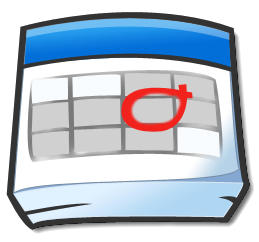In the long run, it pays to extend the reach of your demand generation campaign to include not only those prospects ready to buy, but also anyone else that might be facing the specific issue or problem that your product or service can solve. Occasionally, however, other factors demand a more targeted, aggressive approach.
 For example, your company may want to target a competitor’s installed base because support for their flagship product is coming to an end. Perhaps you want to leverage a recent sales win by targeting other executives within that same vertical. Or some other time-sensitive factor requires that you “get in front of” prospects as soon as possible.
For example, your company may want to target a competitor’s installed base because support for their flagship product is coming to an end. Perhaps you want to leverage a recent sales win by targeting other executives within that same vertical. Or some other time-sensitive factor requires that you “get in front of” prospects as soon as possible.
In these scenarios, one way to accelerate the sales cycle is to present a meeting as the call to action. Such a strategy should be approached with caution, however. Success in securing meetings through demand generation often requires expensive, high-impact creative (to ensure you grab the prospect’s attention), along with carefully crafted, highly compelling copy that convinces the prospect that your company is worth his or her valuable time. Here are three other tips to consider:
1. Don’t call it a “meeting.”
For most executives, meeting with a salesperson ranks near the bottom on a list of how they like to spend their time at the office. So don’t call it a meeting. Describe your offer in terms that imply a benefit to the prospect: an “in-person ROI analysis”, “network performance audit”, “benchmark survey”, etc.
2. Be specific.
A meeting is no different from any other offer. People want to know what they’re getting. As a description, therefore, “meet with our representative” won’t cut it. Be specific. Describe exactly how long you expect the session to last (and don’t say “one hour” because it sounds arbitrary.) Instead, try something like “45 minutes, or shorter than the average lunch hour”.
Secondly, treat the meeting as if you were promoting an event, like a Webinar. Make sure the reader understands exactly how you plan to use his or her time. Construct two or three bullet points that detail the steps you’ll take to make the meeting as efficient as possible.
3. Include both personal and business motivators.
In my last post, I wrote about the critical nature of personal value in demand generation and B2B marketing in general. In a similar fashion, there are two reasons why people accept meetings. One, because they think it can benefit their business. And secondly, because they think there’s something in it for them personally. Make sure your invitation addresses both. An example of a business benefit could be a custom report prepared specifically for the executive and his or her company based on the information collected in the meeting. The personal benefit could be a free gift of some sort – a golf club, cell phone, iPad, etc.
Excerpted from “The High Tech Demand Generation Handbook.” To download your free copy, click here.
